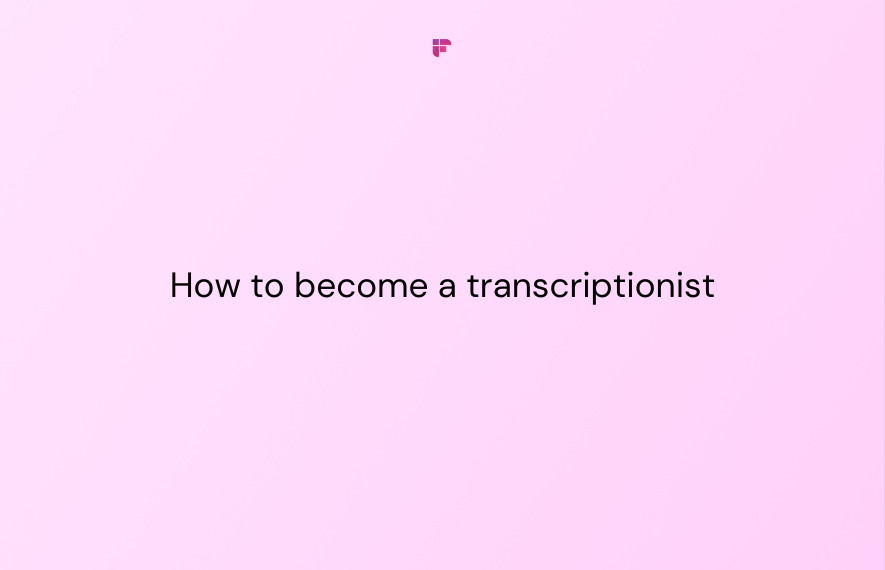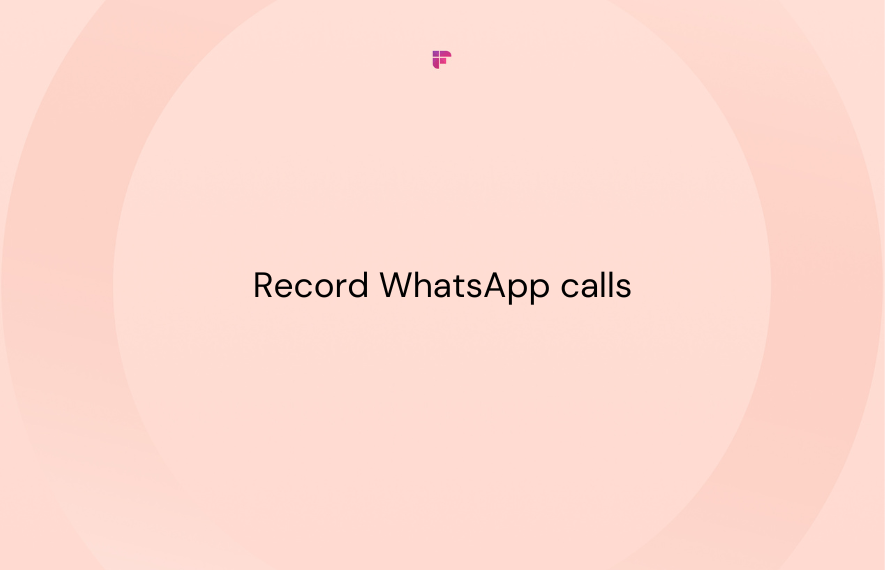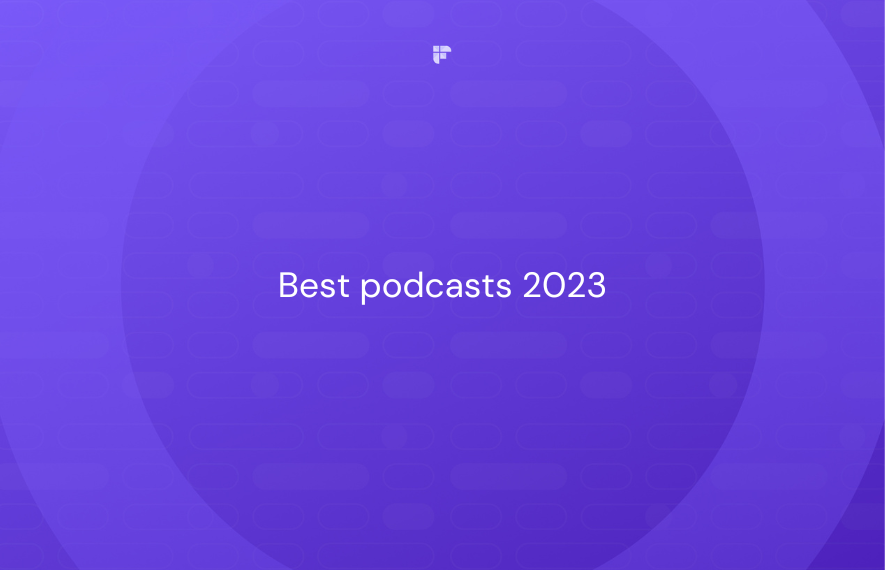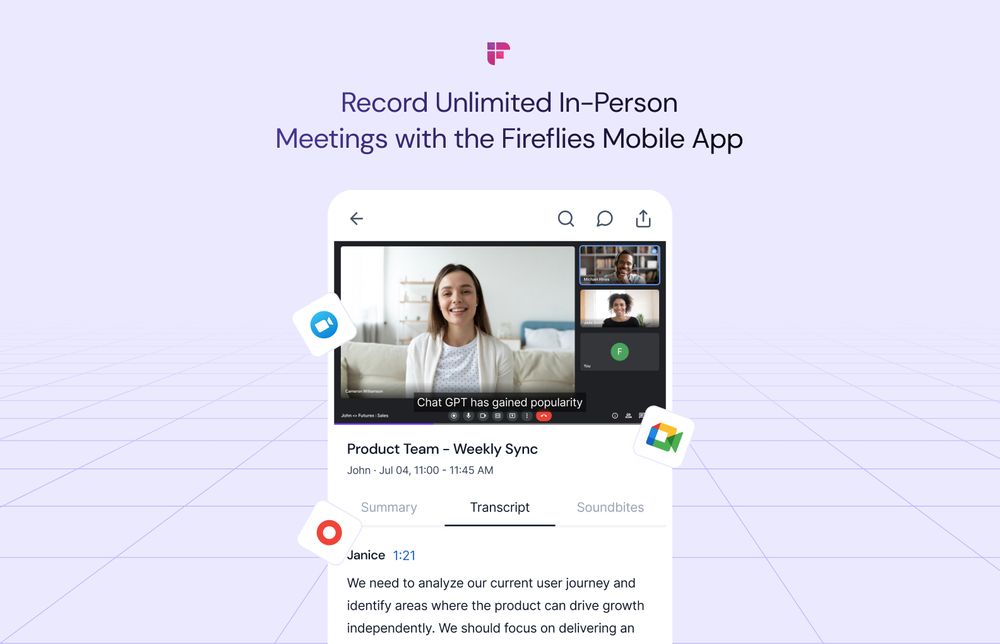Are you someone with a knack for typing and looking for a flexible career option?
If so, a career as a transcriptionist could be the perfect fit for you!
As a transcriptionist, your main responsibility is to convert audio and video content into written documents that are easily accessible and searchable.
In this comprehensive guide, we'll discuss everything you need to know about becoming a transcriptionist, from acquiring the necessary skills to finding your first clients and excelling in the industry.
Plus, we'll introduce you to Fireflies.ai — an innovative tool that can supercharge your transcription workflow and elevate your career to new heights.
Let's get started!
Who is a transcriptionist?

A transcriptionist listens to audio or video content and types out what they hear into written text. They can transcribe either recorded content or live human speech.
Transcriptionists can transcribe recorded content or live human speech. They often work in diverse fields and may specialize in specific types of transcription, depending on their expertise and interests. We'll expand on this more in the next section.
Aside from working full-time and in an office setting, transcriptionists can also work from home as freelancers, making it a very flexible career choice.
Areas a transcriptionist can specialize in
There are various specialties within the transcription field that you can choose from, each with its own focus and requirements. Some of them include:
1. Medical transcription
Medical transcription involves transcribing recordings related to healthcare, such as patient histories, medical reports, and dictations by healthcare professionals. Medical transcriptionists can work for hospitals, clinics, and private practices.
You'll need to be well-versed in medical terminology, procedures, and documentation standards.
2. Legal transcription
Your main responsibility here is to transcribe legal documents, court proceedings, depositions, and other legal recordings.
You can work for law firms, courts, legal departments, or government agencies as a legal transcriptionist.This role requires proficiency in and knowledge of legal terminologies.
This device allows them to type in shorthand, enabling them to keep up with the rapid pace of courtroom dialogue.
The shorthand is later converted into readable text by a computer, resulting in accurate legal transcripts.
Related: 10 Benefits of Automated Transcription for Lawyers
3. Interview transcription
This involves transcribing live or recorded interview sessions. This can be for research, journalism, or documentation purposes.
4. Academic transcription
Academic transcriptionists transcribe lectures, presentations, research interviews, conferences, and other educational materials. You may need to understand specialized terminology depending on the subject matter.
5. Captioning/subtitling
This involves creating captions or subtitles for audiovisual content to make it accessible to a broader audience, including the deaf and hard of hearing or viewers in different languages.
You'll need to accurately transcribe spoken dialogue, sound effects, and other audio elements and synchronize them with the video.
6. General transcription
A general transcriptionist transcribes audio and video into text documents across various industries. They can transcribe anything from business meetings and college lectures to podcasts and interviews.
These transcriptionists are often quick learners who can adapt to new topics efficiently.
However, they may be unable to transcribe specialized content in law and medicine.
How to become a transcriptionist

In this section, we'll show you how to become a transcriptionist in six steps.
1. Choose a niche
First, you need to select a niche or area of specialization that aligns with your interests, personality, and skills.
As we've covered earlier, transcription work spans various industries, including medical, legal, academic, and general transcription.
However, each specialty has its requirements and terminology, so you must choose one that resonates with you.
Doing this will help you tailor your skills and services to meet clients' specific needs in that field.
2. Improve your skills
If you're looking to deliver accurate and high-quality work as a transcriptionist, there are certain skills you should have.
These skills include, but are not limited to:
- Formatting
- Proofreading
- Editing
- Research
- Multitasking
- Strong typing skills with good speed and accuracy
- Attention to detail
- Careful listening
- Ability to focus
- Proficiency in grammar, punctuation, and spelling
- Patience
- Proper knowledge of industry-specific terminology (depending on the transcriptionist's area of specialty)
- Ability to recognize non-verbal cues
- Knowledge of multiple languages
- Basic computer skills
3. Acquire the necessary equipment and tools
Having the right tools, equipment, and software is vital to succeed as a transcriptionist. Some of them include:
- Laptop or computer with ample storage space
- Word processors like Microsoft Word
- Quality headphones or speakers
- Fast internet connection
- A foot pedal that lets you adjust (rewind or fast forward) video and audio files with your foot
- An ergonomic chair and keyboard to provide comfort as you type
- Grammar checkers like Grammarly
- Audio and video converters
- A sound enhancer
- Time tracking software to track the amount of time you spend on each transcription
- Transcription software like Fireflies (we'll cover more on this later!)
4. Get formal training
While some transcriptionists may learn on the job, formal training can accelerate your progress as a beginner, improve your marketability, and give you a competitive edge.
Search for online courses, workshops, or certification programs that cover transcription fundamentals, techniques, and industry best practices.
These resources often provide valuable insights into different transcription niches, audio file types, and specialized software tools.
You can take transcription courses at the Transcription Certification Institute, Udemy, Transcribe Anywhere, and Skillshare.
5. Apply for jobs
Once you've developed your skills, undergone adequate training, and acquired the necessary equipment, it's time to start applying for transcription jobs.
You can find transcription jobs on websites and platforms like:
- Daily Transcription
- Upwork
- GoTranscript
- TranscribeMe
- Transcription Hub
- Scribie
- Crowdsurf
- TigerFish
- CastingWords
- GMR Transcription
- Quicktate
- Way With Words
- SpeakWrite
- Indeed
- 3Play Media
Plus, networking with other transcriptionists and professionals can also help you get job leads, industry insights, and training opportunities.
6. Build your portfolio
As you gain experience and complete transcription projects, you must build a portfolio containing your work samples. This lets you showcase your transcription skills and attract potential clients or employers.
How much does a transcriptionist make?

The salary of a transcriptionist can vary based on factors such as skill level, years of experience, location, and the type of transcription work you perform.
According to ZipRecruiter, the average hourly pay for a transcriptionist in the United States as of 2024 is $20.19.
4 Handy tips to help you excel as a transcriptionist
As you kickstart your career in the transcription field, keep these tips in mind:
1. Manage your time efficiently
Time management is crucial for transcriptionists, as they often have tight deadlines.
You'll need to create a schedule that allows you to allocate sufficient time for transcribing, proofreading, and editing.
It's also advisable to break down your workload into manageable tasks and set realistic goals for each session.
2. Maintain clear and prompt communication with clients
Establishing open and transparent communication with clients or employers helps you understand their expectations, project requirements, and deadlines.
Don't hesitate to ask questions if you're unsure about something, and keep clients updated on your progress regularly.
Doing this will foster trust and help you deliver high-quality transcripts that meet or exceed client expectations.
3. Prioritize accuracy over speed
While speed is important in transcription, accuracy should always be your top priority. You should strive to produce error-free transcripts that properly reflect the original audio or video content.
Take the time to review and proofread your transcripts thoroughly before submitting them. Quality over quantity is key to establishing yourself as a reliable and trusted transcriptionist in the industry.
4. Never stop learning
It's important to stay updated on the latest trends, developments, and best practices in transcription. You can attend workshops, webinars, and conferences or enroll in online courses.
Regular practice is also key as you embark on this new career, as it will help you build efficiency over time. Set aside dedicated time each day to practice your transcription skills, whether it's transcribing practice audio files, dictations, or even videos.
Fireflies—The ultimate tool to enhance your transcription experience
.png)
Starting a transcription career can seem daunting, but Fireflies ensures you don't have to go through it alone.
This AI-powered transcription tool can help you record, transcribe, summarize, and analyze meetings.
What's more, you can upload your audio/video files to Fireflies and receive highly accurate transcripts in mere minutes!
With Fireflies, you can reduce turnaround times, enhance productivity, and improve the quality of your work.
Key features
- Generates transcripts with over 90% accuracy. These transcripts also contain timestamps and speaker labels.
- Transcribes meetings and files in over 60 languages (and 3 English accents.)
- Provides 5-part AI summaries that contain bullet point notes, action items, and more. You can also customize these summaries according to your preferred use case.
- Takes your meeting security seriously by upholding the highest security standards—Fireflies is GDPR and SOC 2 Type 2 compliant and encrypts all your data at rest and in transit.
- Allows you to playback your recordings at five speeds: 1x, 1.25x, 1.5x, 1.75x, and 2x.
- Offers a user-friendly transcript editor.
- Transcribes files uploaded in the following formats: MP3, MP4, M4A, and WAV.
- Allows you to export your transcripts in PDF, DOCX, SRT, VTT, or JSON formats.
- Allows you to collaborate on your transcripts with others using soundbites, comments, and reactions.
- Helps you search and quickly retrieve important information from your transcripts with Smart search filters.
- Offers 40+ integrations with video conferencing apps, collaboration tools, CRM software, and more to simplify your workflow. Fireflies also provides an API for building custom integrations.
- Offers a ChatGPT-powered chatbot, AskFred, that can answer any questions you have about your meetings. This bot can also generate content like emails, blog posts, and reports based on your meeting's context
- Keeps all transcriptions in a centralized location to keep them organized and make them easily accessible
- Offers flexible and affordable pricing. You can get started for free and get 800 minutes of storage. To access more features and storage, you can explore any of its plans, which start at $10/user/month. What's more, you can also try out a 7-day free trial of its highest pricing tier.
Streamline your transcription workflow with Fireflies.ai
With Fireflies' easy-to-use, intelligent features, you can improve your productivity and enhance the accuracy and efficiency of your transcripts.
Try Fireflies for free!Conclusion
Launching your career in a flexible, lucrative, and in-demand field like transcription can be very rewarding.
By continuously honing your skills, following industry standards, and leveraging powerful tools like Fireflies, you can thrive as a transcriptionist and unlock endless opportunities.






